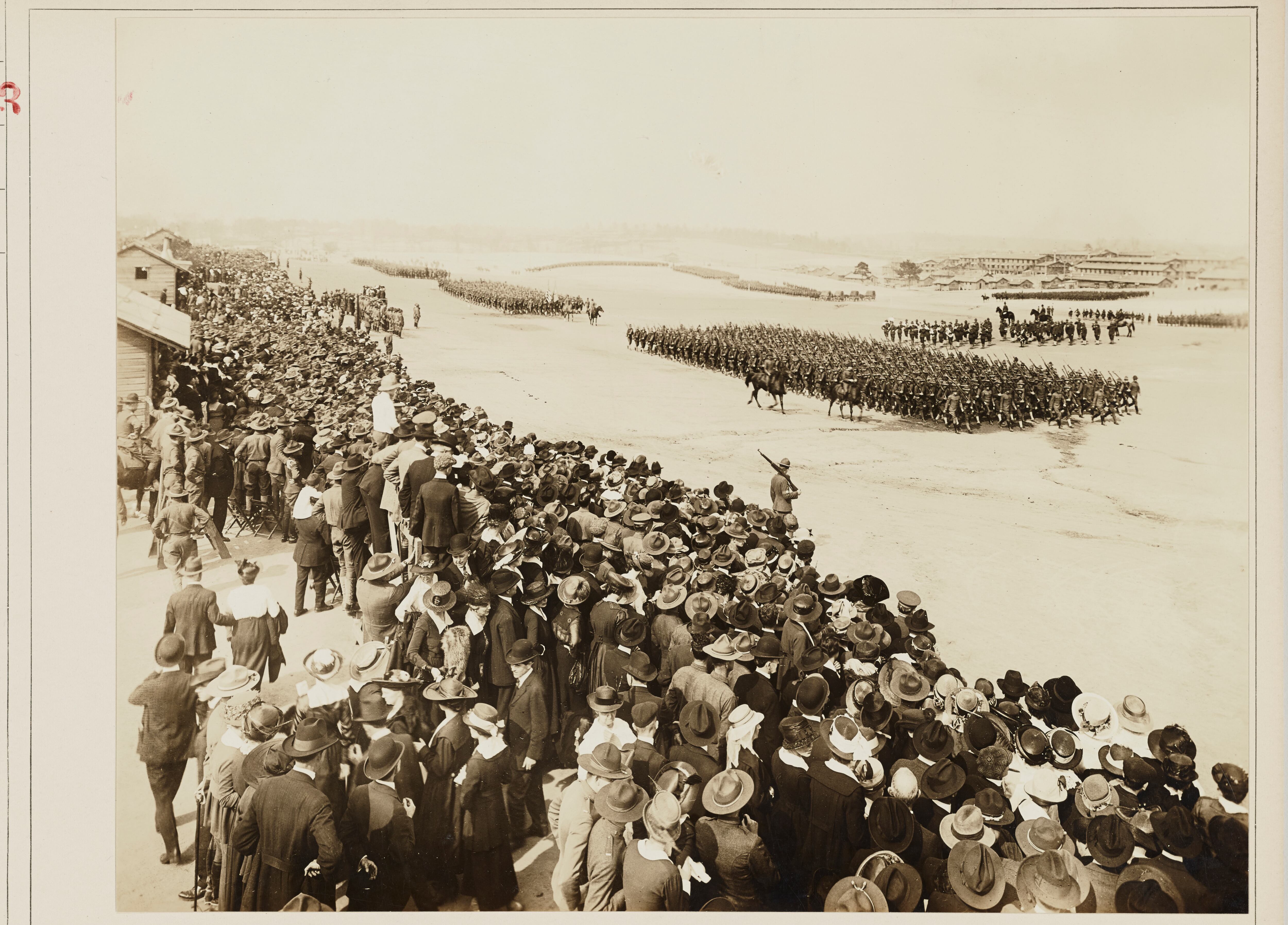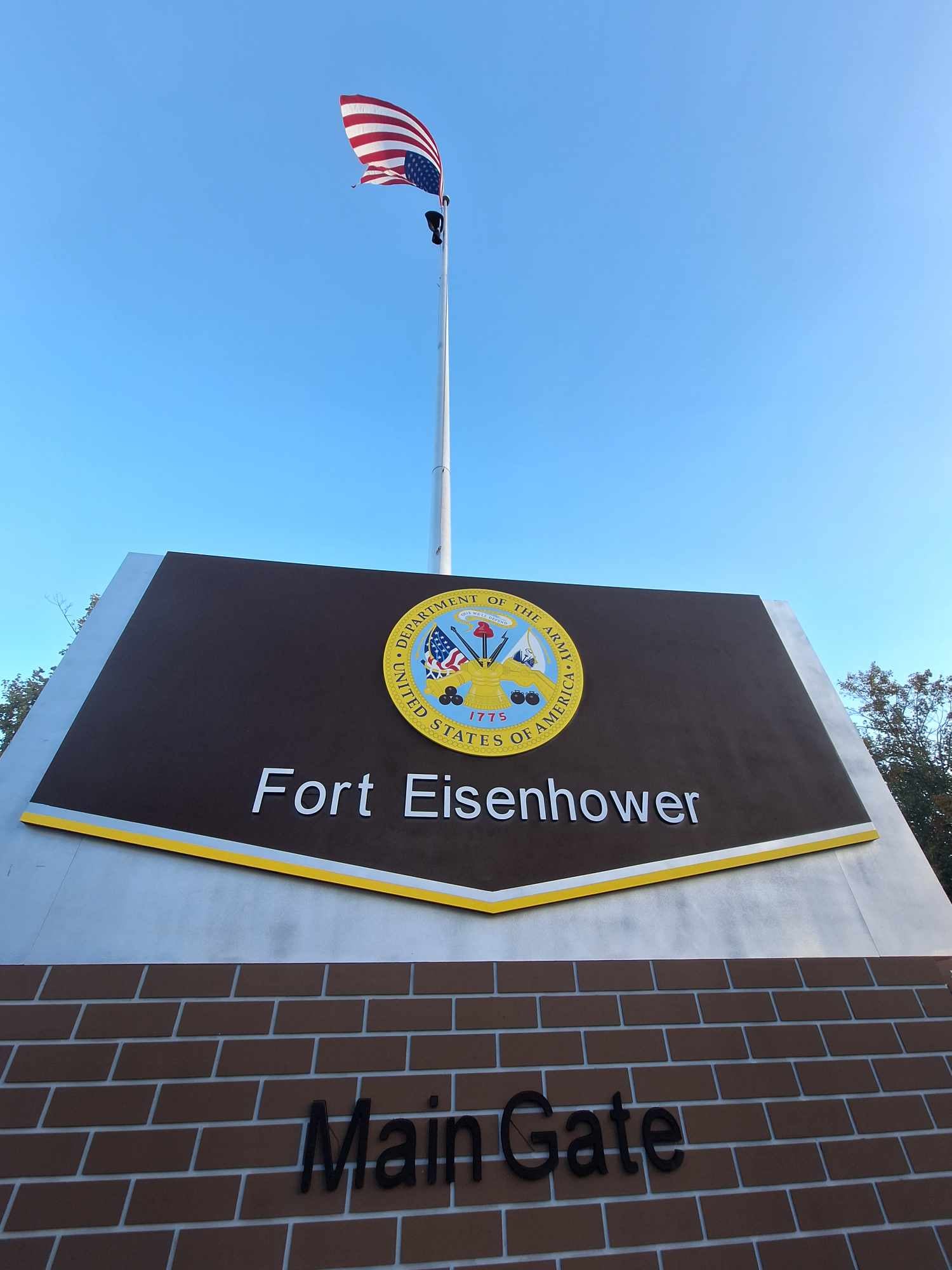FORT EISENHOWER, Ga. — When this installation’s former namesake invaded Maryland, the U.S. Army shot him five times.
Despite receiving five bullets at Antietam in 1862 — and three additional wounds in other battles — as he rose from captain to major general in the Confederate army during the Civil War, former slaveowner John Brown Gordon survived to become the head of the Ku Klux Klan in Georgia.
As a member of the U.S. Senate, Gordon helped negotiate the end of Reconstruction in 1877, which rehabilitated the white Southern elite and allowed a new era of racial oppression to emerge. A two-term governor of Georgia, Gordon was also the first commander of the United Confederate Veterans.
But in a Friday morning ceremony just outside of Augusta, the Army eschewed Gordon’s legacy in favor of that of Dwight D. Eisenhower, the post’s new namesake. Eisenhower helped lead the destruction of Nazi Germany as a five-star general in World War II, and oversaw key racial integration milestones later as president. In 1957, Eisenhower deployed the 101st Airborne Division to Arkansas and federalized the state’s National Guard when the governor attempted to block nine Black students from attending Little Rock Central High School.
Army Secretary Christine Wormuth spoke of Eisenhower’s achievements in a speech accompanying the ceremony, which members of the former president’s family attended.
Friday’s renaming marks the final such installation-level move for the Army, culminating a nearly three-year process that began when Congress’ fiscal 2021 defense policy bill established the bipartisan Naming Commission to rename the military’s places and objects that honored Confederates. Four members of the commission attended the final redesignation at Eisenhower.
Wormuth’s remarks also acknowledged how the renaming process emerged from the “unrest and significant division in our country” that followed racial justice protests sparked by the 2020 death of George Floyd. But she celebrated how the new namesakes “unquestionably represent” what the Army wants to see from its future soldiers and leaders.
The vice chair of the commission, retired Army Brig. Gen. Ty Seidule, voiced a similar sentiment in a Wednesday phone interview.
“It’s never too late to recognize true American heroes...that represent the values of this great country,” he said.
The following Army installations received new names this year:
- Fort Barfoot, Virginia, once Fort Pickett, was renamed after Col. Van T. Barfoot on March 24. He received the Medal of Honor during World War II for his actions as a noncommissioned officer in Italy in 1944.
- Fort Novosel, Alabama, once Fort Rucker, was renamed on April 10 for Chief Warrant Officer Michael Novosel, who fought in three wars and received the Medal of Honor for a Vietnam War medical evacuation mission.
- Fort Gregg-Adams, Virginia, once Fort Lee, was rechristened April 27 for Lt. Gen. Arthur Gregg, the Army’s first Black lieutenant general, and Lt. Col. Charity Adams, who commanded the all-Black female 6888th Postal Battalion during World War II
- Fort Cavazos, Texas, once Fort Hood, was redesignated for infantry Gen. Richard Cavazos, the service’s first Latino four-star, on May 9. Cavazos, who led soldiers in both Korea and Vietnam, twice received the Distinguished Service Cross.
- Fort Bragg, North Carolina, became Fort Liberty on June 2.
- Fort Polk, Louisiana, transitioned to Fort Johnson on June 13. Nearly a century after his exploits, Sgt. William Henry Johnson of the World War I “Harlem Hellfighters,” received the Medal of Honor in 2015.
- Fort A.P. Hill, Virginia, transitioned to Fort Walker, named for Civil War surgeon and Medal of Honor recipient Mary Edwards Walker, August 25.
- Camp Beauregard, Louisiana, was renamed Louisiana National Guard Training Center-Pineville on Oct. 20.
But the changes went beyond merely base names. The Naming Commission identified more than 1,100 objects across the Defense Department — ranging from the USS Chancellorsville to street names — whose labels rated reconsideration, transforming the commemorative landscape of military installations across America.
‘The Confederates chose treason’
Speaking to reporters ahead of the ceremony, post commander Maj. Gen. Paul Stanton lauded the “transition from arguably a failed leader to a visionary, world leader that resonated with all of the soldiers that he led.” The two-star oversees the Army’s cyber warfare schools.
For one commission member in the audience, Friday’s moment held heavy professional — and personal — significance.
Naming Commission vice chair Seidule, an armor officer who retired in 2020 as head of West Point’s history department, grew up blind to the damage that the Confederacy and its legacy did to American society, he explained in a 2021 memoir. He fell sway to the “Lost Cause” myth, which holds that the Civil War was not fought over the issue of slavery.
In an interview with Army Times on Wednesday, Seidule said his personal turning point was when he came to understand that Robert E. Lee and other Confederate officers committed treason. He thus celebrated the renaming as an opportunity to align the military’s symbols with its values.
The modern Fort Gordon was established just before the U.S. entered World War II in 1941, but it was named for a predecessor World War I camp that was based in the city of Decatur, Georgia, located just northeast of Atlanta.
According to historians, the War Department intentionally named World War I bases in the South after Confederates in order to appease local elites and inspire the mostly-white units that trained in hastily built camps near where they lived. Many of the names stuck.

“By 1917, all the Southern states had redone their constitutions with the explicit purpose of disenfranchising Black people,” said Seidule. “It was also the height of lynching, and it was also the time when Jim Crow laws…came together.”
That era was when the Lost Cause myth came into bloom — the vast majority of Confederate monuments were raised between 1900 and 1920. Many were sponsored by groups like the United Daughters of the Confederacy that also rewrote school books to minimize slavery’s role in the Civil War. But their whitewashed version of history is false, Seidule argued.
“The Confederates chose treason to preserve slavery; they killed U.S. Army soldiers. And many of them renounced their oath [in order] to create a slave republic,” Seidule said. He added that the former base names emerged when the service was a “segregationist Army, and they just don’t reflect the values that we have today.”
But Eisenhower does reflect those values, Friday’s speakers declared.
Wormuth praised his “loyalty, integrity and selfless service.”
The installation commander, Stanton, urged soldiers to “go back and…look at the pictures. Look at the eye contact that Gen. Eisenhower makes with the soldiers that are under his command. They know that they’re being led by a man of character, and he inspired them to do their life’s best work on a daily basis, whether that be in combat, whether that be in training, or whether that be later in life.”
He and the other speakers noted that honoring Eisenhower with a base name was long overdue.
Eisenhower’s local legacy
Although a number of finalists for the Georgia post’s name were worthy of the honor, the Naming Commission selected Eisenhower in a decision that the Washington Post reported emerged from “last-minute lobbying” on the former president’s behalf. Some critics of the decision, who believed the choice undercut worthy Black candidates with local ties, argued that Eisenhower lacked adequate connections to the installation.
Retired Adm. Michelle Howard, who served as the commission’s chair, said community members overwhelmingly overrode the group’s suggested finalists to suggest Eisenhower.
And Eisenhower’s ties to the nearby city of Augusta are hard to deny. Over the course of his life, he made 45 trips to the city along the Savannah River. He became a member of Augusta National Golf Club — home of the iconic Masters tournament — in 1948, and frequented it through his presidency and beyond until his death in 1969 following his third heart attack. The president also joined a local Presbyterian church.
In his remarks at the ceremony, Stanton succinctly said, “Here…we like Ike,” referring to the post namesake’s presidential campaign slogan.

Wormuth alluded to these local connections in her remarks, and also highlighted the installation’s role during World War II producing soldiers who served under the five-star general’s command.
Stanton also argued that Eisenhower’s legacy as an “innovator” and “technologist“ make him a strong symbolic fit for the Army’s cradle of cyber warfare.
“If you look at the things that he pioneered during his two successive administrations,” like the U-2 spy plane, NASA and the Advanced Research Projects Agency, the two-star said, “we wouldn’t have the [tech] solutions that we leverage now.”
Between World War I and World War II, Eisenhower and his contemporary, Gen. George Patton, helped the Army overhaul its maneuver warfare doctrine to better incorporate the rapid technological advancement of the tank.
“You can bind visionary world leader, warrior, statesman, [and] man of character with the technology,” Stanton said. “It’s the perfect combination for Fort Eisenhower.”
Davis Winkie covers the Army for Military Times. He studied history at Vanderbilt and UNC-Chapel Hill, and served five years in the Army Guard. His investigations earned the Society of Professional Journalists' 2023 Sunshine Award and consecutive Military Reporters and Editors honors, among others. Davis was also a 2022 Livingston Awards finalist.




